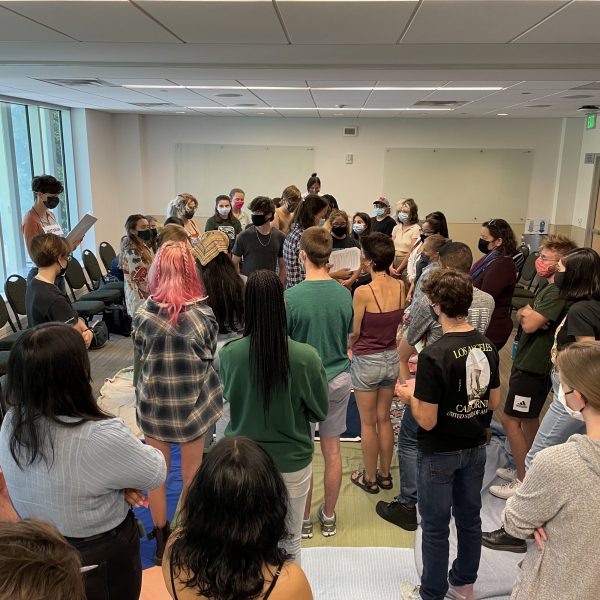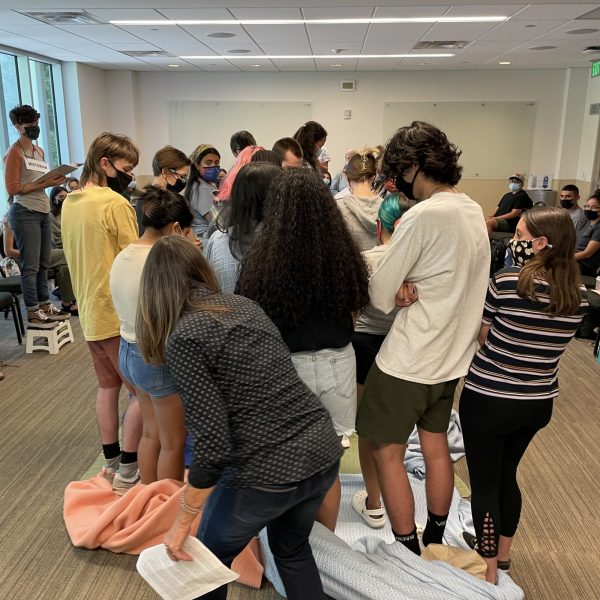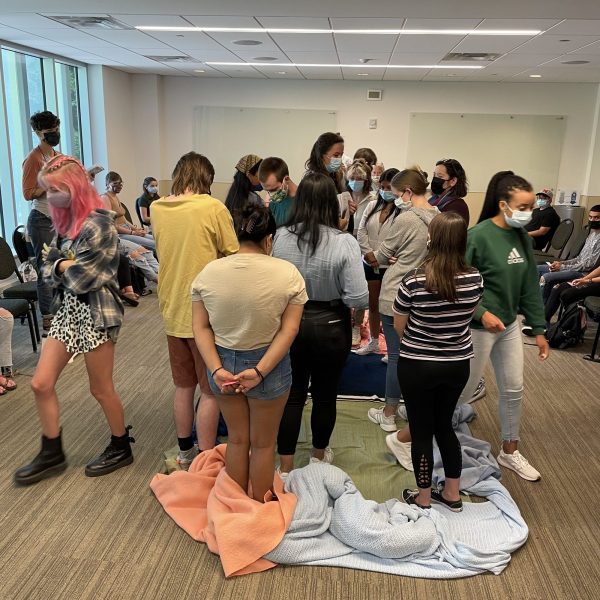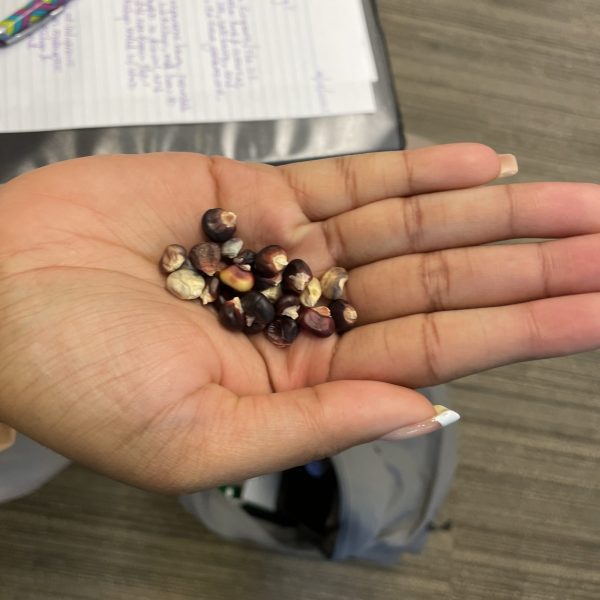Ethnic Studies classes uncover Indigenous history through Blanket Exercise rendition
Joshua Zaffos
In a large room inside the Lory Student Center, Colorado State University students each hold a colored index card and stand on an array of blankets placed on the floor. The blankets represent Turtle Island, the Indigenous conception of North America as it once was.
During the following joint class between Native American Cultural Experience (ETST 240), taught by Professor Lindsey Schneider, and Indigenous Knowledges (ETST 441), taught by Professor Doreen Martinez, the 50-plus students in these Ethnic Studies courses will experientially engage with 500 years of Indigenous history and colonialism in just 50 minutes.


The activity is an adaptation of the Blanket Exercise, an interactive program developed by KAIROS, a Canadian ecumenical environmental- and social-justice group and First Nations peoples. The exercise illustrates the loss and reshaping of the American landscape as European settlers and colonizers arrived and claimed the continent and removed and attempted to exterminate tribes and their ways from the land. This rendition, called “(Re)discovering America,” focuses on events, policies and tragedies inflicted upon Indigenous nations and peoples in the United States by the U.S. military and, generally speaking, the Christian church. It was developed by several people including Martinez and Paula Palmer of the Indigenous Peoples Concerns committee of the Quaker Meeting in Boulder, Colorado.
“Rarely can one experience history in such a powerful, contemporary way with and alongside dozens of other people,” said Martinez who facilitates the exercise for community groups and others, and is Mescalero Apache. Through the exercise, “History comes to life.”
As the workshop begins, four individuals stand on stools amid the student group, portraying the roles of Narrator, Historian, Native American, and European, and ready to share historical words and context. The Native American speaker, represented by Schneider, herself Turtle Mountain Chippewa, stands at the center of the blankets and the room; the Narrator, Historian, and European stand at the edges of the blankets.


The speakers on the stools offer accounts and actual quotes from Indigenous leaders and nation members, as well as conquistadors and missionaries, presidents and generals. At moments in the narrative, History Professor Leisl Carr Childers takes on the role of Blanket Turner and walks in a circle around the students, folding up and pulling away blankets from the floor, representing the loss and theft of Native territories. It is a stark visual as students are driven into a tighter and tighter group on less and less space.
“It was a very emotional experience,” one student said after the activity.
“Students told me afterward,” said Schneider, “that they never realized before just how much determination it took for Native people to persist in the face of colonial genocide – which is exactly why it’s so important for workshops like this, and Indigenous Studies classes, to be part of the educational experience for students at CSU. It’s important to understand the history of oppression, but it’s just as crucial to know that we survived for a reason. We’re still here, our knowledge is still relevant, our cultures are alive and active.”
When the four readers recount outbreaks of disease, violent military campaigns, and federal policies that led to poverty and disenfranchisement, the Narrator announces students holding a particular color index card as the victims who then step off the blankets and return to seats. In this version, a pink card represents death by disease, for instance. After each loss, the narrator says, “In this moment of reflection, we remember you,” and the activity pauses for a moment of respect.
“There is so much I didn’t know,” another student said. “I had no idea there were that many treaties that have never been kept.”
As the workshop proceeds, Turtle Island shrinks away and the Native American population dwindles; a powerful visual portrayal of the continent’s last 500-plus years of human history and the impacts of European imperial interests. By the end, only a handful of students are squeezed onto a few folded blankets with most participants observing from their seats.


The relatively recent return of some Indigenous lands warrants a small unfolding of a blanket. It’s both a reminder of how much has been taken without permission or compensation from Native people and how little has been returned as well as a testimony to the continuing Indigenous existence and presence in the U.S.
Another student reflected: “I valued how much information was covered – in a way that I could feel it while others were feeling it, too.”
“This learning opportunity is crucial for students,” Martinez said. “Native voices are offered from our Indigenous practices and ways of being, and it also brings to the forefront various legacies of national, military and church actions and impacts on Indigenous peoples.”